Antarctica, the southernmost continent, is a vast and virtually uninhabited land of extremes, entirely covered by ice and surrounded by some of the planet’s most treacherous waters. Despite its icy conditions, this frozen wilderness holds the title of the largest desert on Earth due to its minimal precipitation. Its unique environment, harsh climate, and isolated position have fascinated explorers and scientists alike for centuries. From its staggering ice sheets to its remarkable wildlife, Antarctica is a place full of mystery and wonder. Here are some fascinating facts about this extraordinary continent that will give you a deeper insight into the coldest place on the planet.
Antarctica Facts
1. Antarctica is the Coldest Place in the World
On July 21, 1983, during the Antarctic winter, the coldest temperature ever recorded on Earth was -89.2°C (-128°F) at Antarctica’s Vostok station.
Furthermore, according to a new study published this week in the AGU (American Geophysical Union) journal Geophysical Research Letters, several locations on the East Antarctic Plateau reach temperatures nearing -100°C (-148°F) during the Antarctic winter. Researchers re-examined data from multiple Earth-observing satellites and discovered that the coldest place on Earth is even colder than previously believed.
2. Antarctica is the Driest Continent in the World
As mentioned earlier, Antarctica is so dry that it is classified as a desert due to its extremely low precipitation, averaging just 166 millimeters (6.5 inches) of precipitation per year. The driest place on Earth is also located in Antarctica, known as the McMurdo Dry Valleys. Within this area, the Friis Hills in Taylor Valley haven’t seen liquid water for an astounding 14 million years. (Source)
Overall, Antarctica is the driest continent in the world. However, despite the low precipitation, it is covered by thick ice due to the accumulation of snowfall over millions of years. The cold temperatures in Antarctica ensure that any precipitation that does fall, mostly in the form of snow, does not melt but instead gradually compacts into ice.
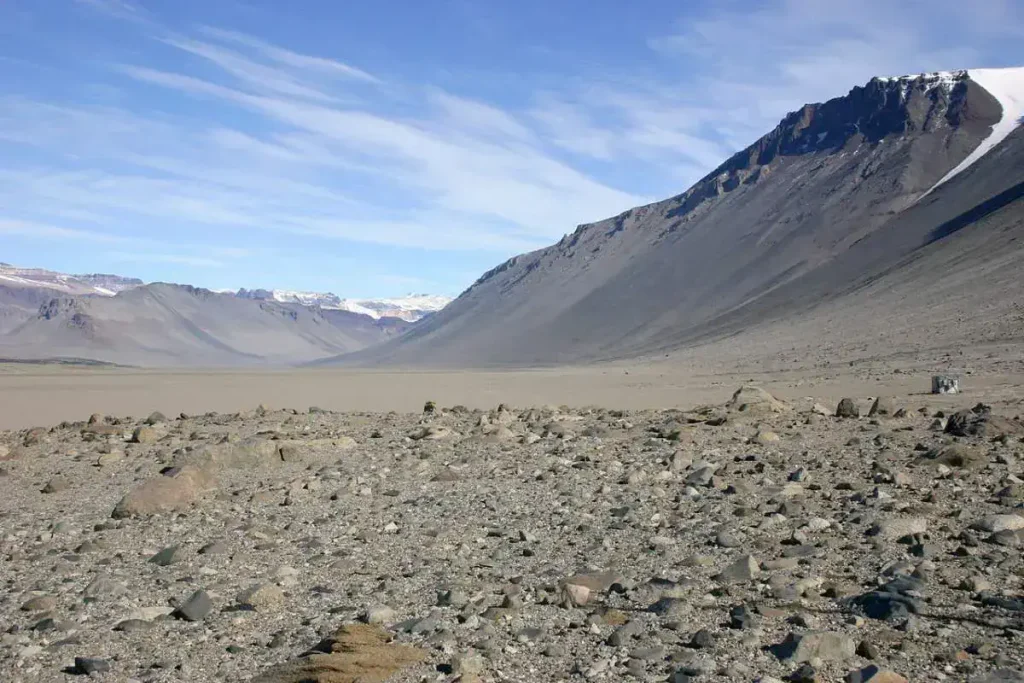
Even with only around 6.5 inches of annual precipitation, Antarctica’s extremely low temperatures prevent significant melting. Over long periods, the layers of snow build-up, compressing into massive ice sheets that cover about 98% of the continent today. These ice sheets, some of which are miles thick, have remained largely intact due to the continent’s cold climate and isolation, making Antarctica both the driest and coldest place on Earth, yet paradoxically covered by ice.
3. 98% of Antarctica is Covered by Ice
98% of Antarctica is covered by ice. With an average thickness of about 1.4 miles (2.2 kilometers), the Antarctic Ice Sheet is the largest single mass of ice on Earth, reaching a maximum thickness of 3.0 miles (4.9 kilometers).

4. If all of Antarctica’s Ice Were to Melt, Global Sea Levels would Rise by 60 meters (200 feet)
If all of Antarctica’s ice were to melt, global ocean levels would rise by an astonishing 60 meters (200 feet). This dramatic increase would have catastrophic effects, submerging countless coastal cities and displacing millions of people worldwide. Fortunately, such a complete melting scenario would take thousands of years, but even gradual ice loss due to global warming poses a significant threat to low-lying regions in the coming decades.
5. Antarctica is losing 125 gigatons of ice per year
Since 2002, Antarctica has been losing approximately 125 gigatons of ice per year, causing global sea levels to rise by around 0.35 millimeters annually.
Between 2002 and 2023, the Antarctic ice sheet experienced significant mass changes, shedding an average of 150 billion metric tons of ice per year, contributing to global sea level rise.
The video below, based on data from the GRACE and GRACE-FO satellites, highlights ice mass variations across Antarctica since 2002. Shades of orange and red represent areas with ice mass loss, while light blue shades indicate regions of ice mass gain. White areas mark regions with minimal or no change, and floating ice shelves, which GRACE and GRACE-FO cannot measure, are shown in gray.
In East Antarctica, modest mass gains occurred due to increased snowfall. However, this has been far outweighed by the dramatic ice loss in the West Antarctic Ice Sheet, shown in dark red. Notable regions of significant loss include the Pine Island and Thwaites glaciers, where satellite radar interferometry shows ice flow converging into these prominent outlet glaciers. These areas align with observations of warming ocean waters, which play a critical role in driving ice mass loss.
This 21-year record underscores the ongoing and accelerating impact of climate change on Antarctica, with profound implications for global sea levels and polar ecosystems.
6. Antarctica is the Windiest Continent in the World
Antarctica holds the title of the windiest continent on Earth, with conditions that can be truly extreme. In certain regions, such as the McMurdo Dry Valleys, winds reach astonishing speeds of up to 320 km/h (200 mph). These powerful gusts, known as katabatic winds, occur when dense, cold air from the elevated interior of the continent rushes downhill, gaining momentum as it moves toward the coast.
This high-speed, bone-chilling wind is a defining feature of the Antarctic climate, making it one of the harshest environments on the planet. The combination of intense winds and freezing temperatures creates a landscape where survival is challenging, influencing the unique ecosystems and shaping the icy terrain in remarkable ways.
7. Antarctica is the Highest Continent in the World
Antarctica stands out as the continent with the highest average elevation, reaching approximately 8,200 feet (2,500 meters) above sea level. This elevated landscape is largely due to the vast Antarctic Ice Sheet, which blankets the continent in layers of compacted snow and ice, often miles thick. Beneath this icy surface, Antarctica’s terrain is diverse, with hidden mountain ranges, valleys, and even volcanoes.
The combination of its high altitude and icy covering contributes to its extreme climate, as colder temperatures persist at higher elevations. This unique elevation profile makes Antarctica not only the coldest but also one of the most topographically intriguing continents, with its towering ice masses shaping both its climate and its distinct geographical identity.

8. Antarctica is the Fifth Largest Continent in the World
Antarctica is the fifth-largest continent, covering an impressive 14 million square kilometers (5.4 million square miles). This immense size makes it larger than Europe, which spans 10,180,000 square kilometers (3,930,000 square miles), and Australia, at 7,692,024 square kilometers (2,969,907 square miles).
Despite its vast area, Antarctica remains largely uninhabited due to its extreme climate, isolation, and icy terrain. Naturally, it has the lowest population density of any continent. Antarctica has no native or permanent human population due to its extreme climate, isolation, and inhospitable conditions.
Instead, the continent hosts only a few thousand researchers and support staff in scattered research stations, primarily during the austral summer months, when conditions are slightly more manageable. During winter, the population drops to fewer than 1,000 people across the entire continent, resulting in a population density close to zero.

9. The existence of Antarctica was completely unknown until 1820
Until 1820, Antarctica was entirely unknown to explorers and was often thought to be nothing more than a collection of islands or even a myth. For centuries, mapmakers and scientists speculated about a large southern landmass, which they called Terra Australis Incognita, or “Unknown Southern Land.” Many believed that such a landmass must exist to balance the continents in the Northern Hemisphere. However, no concrete evidence was available, and any land south of the equator remained shrouded in mystery.
In January 1820, several expeditions finally confirmed Antarctica’s existence. Russian explorers Fabian Gottlieb von Bellingshausen and Mikhail Lazarev were the first to sight the Antarctic coast, marking the beginning of its discovery. Soon after, British naval officer Edward Bransfield and American seal hunter Nathaniel Palmer also made land sightings.
Despite these discoveries, Antarctica remained largely unexplored for much of the 19th century, with its interior and unique ecosystems only beginning to be studied in the 20th century. For decades after its discovery, the continent was still thought to be primarily a scattered group of ice-covered islands until later expeditions proved it to be a single, vast landmass, locked beneath thick ice sheets.
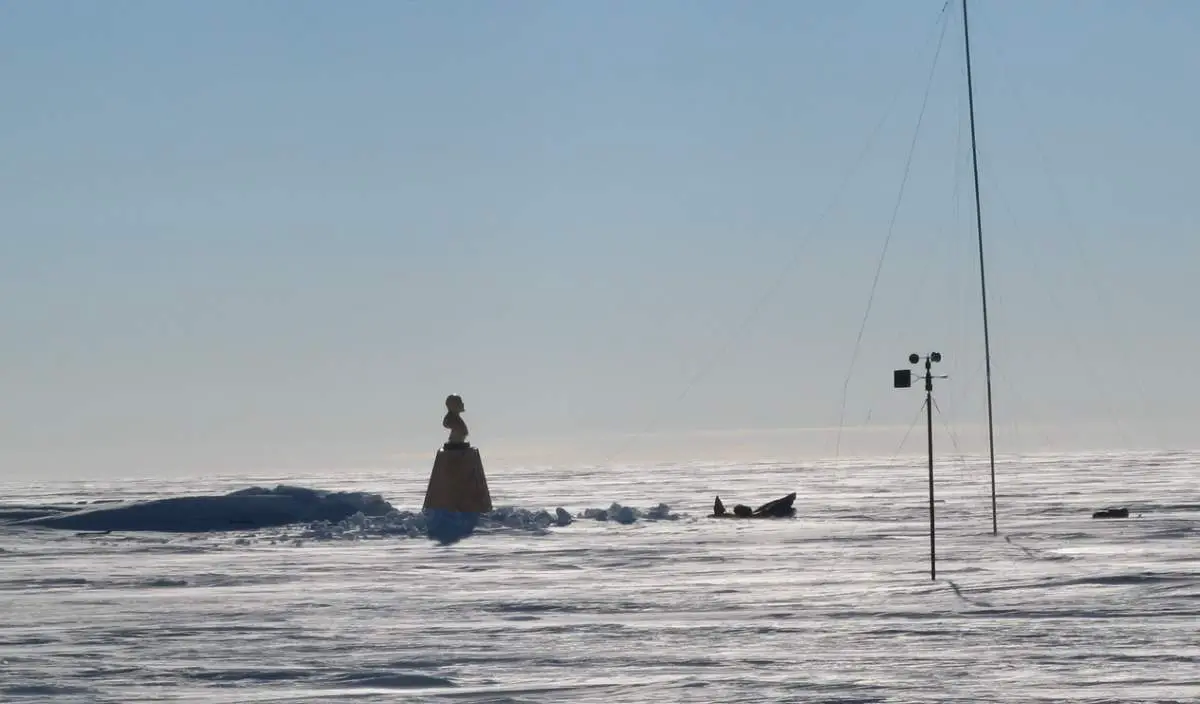
Related: Most Remote Places on Earth
10. The first expedition to reach the geographic South Pole was in 1911 and led by Roald Amundsen
The first successful expedition to reach the geographic South Pole was led by the renowned Norwegian explorer Roald Amundsen (16 July 1872 – c. 18 June 1928). On December 14, 1911, Amundsen and his team of four men achieved this historic milestone, becoming the first humans to set foot at the southernmost point on Earth. Their journey was a triumph of planning, precision, and adaptation to the harsh Antarctic environment.
Amundsen’s team used sled dogs and carefully prepared depots along their route, enabling them to travel efficiently across the icy expanse. Their achievement came five weeks ahead of a competing British expedition led by Robert Falcon Scott (6 June 1868 – c. 29 March 1912) as part of the Terra Nova Expedition. Tragically, Scott and his team reached the South Pole on January 17, 1912, only to discover Amundsen’s flag already there. On their return journey, Scott and his entire team perished due to exhaustion, starvation, and extreme weather.

11. There are Sand Dunes in Antarctica!
Sand dunes are almost always associated with hot deserts, like the Sahara or the Arabian Desert, where warm temperatures, dry conditions, and wind create iconic landscapes of shifting sands. However, the presence of sand dunes in Antarctica challenges this common perception. In the McMurdo Dry Valleys, one of the most arid and coldest places on Earth, sand dunes have formed despite the frigid climate.
These Antarctic dunes owe their existence to the unique conditions of the Dry Valleys, where katabatic winds -strong, cold air flows driven by gravity- sweep down from the polar plateau at speeds that can exceed 320 km/h (200 mph). This intense wind activity moves fine rock particles, sand, and frozen dust across the barren landscape, sculpting dunes similar to those found in hot deserts.
The largest recorded dune in Antarctica was around 70 meters (230 feet) high and over 200 meters (650 feet) wide, showcasing that even in extreme cold, desert-like processes can still shape the land.
The Antarctic sand dunes are a fascinating study for scientists, as they offer insights into wind-driven geological processes in extreme environments. They even provide analogs for planetary research, particularly in understanding cold, arid desert landscapes on Mars, where sand dunes are similarly shaped by wind in a frigid setting. This rare phenomenon in Antarctica thus expands our understanding of dune formation beyond the traditional hot desert paradigm.

12. Antarctica Holds Approximately 70% of All Freshwater on Earth and 90% of the Planet’s Freshwater Ice
The next largest freshwater reservoir after Antarctica is the Greenland Ice Sheet, which contains about 8% of the Earth’s freshwater. For comparison, Antarctica holds around 70% of the planet’s freshwater, with its ice sheet encompassing approximately 26.5 million cubic kilometers (6.4 million cubic miles) of ice over 14 million square kilometers (5.4 million square miles).
Greenland’s ice sheet holds about 2.9 million cubic kilometers (0.7 million cubic miles) of ice, covering 1.7 million square kilometers (660,000 square miles). In contrast, Lake Baikal, the largest freshwater lake by volume, and the third-largest freshwater reservoir on Earth, contains around 23,600 cubic kilometers (5,700 cubic miles) of liquid freshwater.
13. Mount Vinson: The Highest Peak in Antarctica
At an impressive 4,892 meters (16,050 feet) above sea level, Mount Vinson holds the title of the highest peak in Antarctica. Located within the remote Ellsworth Mountains, this towering summit is part of the icy continent’s most formidable landscape.
Discovered in 1958 and named after Carl Vinson, a U.S. congressman who championed Antarctic exploration, Mount Vinson is a destination sought after by experienced mountaineers worldwide.
The journey to the summit is challenging, with extreme cold and isolation adding to its difficulty. Despite these conditions, Mount Vinson attracts adventurers eager to conquer Antarctica’s highest point and witness its peak’s breathtaking, pristine views.

14. Antarctica Has the World’s 4th Longest Mountain Range
Spanning an impressive 3,500 km (2,200 miles), the Transantarctic Mountains are one of the most remarkable features of Antarctica, dividing the continent into its East and West sections. This range is the fourth-longest mountain range on Earth, following the Andes in South America, which stretch for 7,000 km (4,350 miles), making them the longest.
The second and third-longest mountain ranges on Earth after the Andes are: the Rocky Mountains (North America), Approximately 4,800 km (3,000 miles), and the Great Dividing Range (Australia), approximately 3,500 km (2,200 miles).

The Transantarctic Mountains are not just a geographical divider; they hold a treasure trove of scientific and geological significance. These mountains contain some of the oldest exposed rocks on the continent, offering insights into Antarctica’s ancient past. Additionally, the range is a natural boundary for climate and ice flow, influencing the dynamics of the Antarctic Ice Sheet.
The highest peak in the Transantarctic Mountains is Mount Kirkpatrick, towering at an elevation of 4,528 meters (14,856 feet). This peak is famous not just for its height but also for its paleontological importance; fossils of dinosaurs and other prehistoric life have been discovered in its vicinity, shedding light on a time when Antarctica was much warmer and part of the ancient supercontinent Gondwana.
The Transantarctic Mountains highlight the stark beauty and scientific importance of Antarctica, offering clues about Earth’s history while standing as a formidable natural divide in the frozen wilderness.
15. There are about 400 known subglacial lakes in Antarctica
Antarctica is home to around 400 known subglacial lakes, hidden beneath its thick ice sheets. The largest of these is Lake Vostok, located beneath Russia’s Vostok Station, which sits at 3,488 meters (11,444 feet) above sea level. The lake’s surface lies approximately 4,000 meters (13,100 feet) below the ice and about 500 meters (1,600 feet) below sea level.
Lake Vostok is a colossal body of freshwater, measuring 250 kilometers (160 miles) long and 50 kilometers (30 miles) wide at its widest point. Covering an area of 12,500 square kilometers (4,830 square miles), it has an average depth of 432 meters (1,417 feet) and an estimated volume of 5,400 cubic kilometers (1,300 cubic miles). This makes Lake Vostok the sixth-largest freshwater lake on Earth by volume, after lakes such as Lake Baikal, which holds the title of the largest freshwater lake by volume.
Lake Vostok’s isolation beneath the Antarctic ice sheet for millions of years has made it a fascinating subject for scientific research. Its unique ecosystem may hold microbial lifeforms adapted to extreme conditions, offering insights into Earth’s biodiversity and even the potential for life on icy moons like Europa. This hidden Antarctic wonder highlights the mysteries still waiting to be uncovered beneath the frozen continent.

16. There is a Giant Trench under Antarctic Ice that is Deeper than the Grand Canyon
Beneath the thick ice of Antarctica lies a geological marvel – a colossal trench that dwarfs even the iconic Grand Canyon in some aspects. This subglacial valley, hidden beneath kilometers of ice, plunges to depths of up to 3 kilometers (1.9 miles) and spans more than 25 kilometers (15.5 miles) in width. For perspective, the Grand Canyon reaches a maximum depth of 1.8 kilometers (1.13 miles) at its deepest point, making this Antarctic trench significantly deeper.
What makes this trench even more extraordinary is its floor, which, in some areas, descends to more than 6,500 feet (2,000 meters) below sea level. These depths are submerged under layers of glacial ice, forming one of the deepest subglacial features on Earth. Unlike the Grand Canyon, which was carved by the Colorado River over millions of years, this Antarctic trench was shaped by geological processes and glacial movement, further compounded by the weight of the ice sheet pressing down on the continent’s crust.
Scientists have identified this trench as part of a complex network of subglacial valleys and basins that crisscross Antarctica. These valleys play a crucial role in the continent’s ice dynamics. They influence how ice flows toward the coast and, in some cases, may even act as conduits for subglacial rivers and lakes. For example, the presence of liquid water beneath the ice, kept from freezing by geothermal heat and pressure, is believed to sustain microbial life in some areas, offering tantalizing insights into life in extreme conditions.
17. There are Volcanoes in Antarctica!
Antarctica is not just a frozen desert of ice; it’s also home to some fascinating volcanoes! The continent boasts several volcanoes, including Mount Sidley, which is the highest volcano in Antarctica. Mount Sidley has a summit elevation estimated to be between 4,181 and 4,285 meters (13,717-14,058 feet), making it an imposing feature in the remote Marie Byrd Land. This dormant shield volcano is covered in ice and is part of a volcanic group formed millions of years ago.
Another remarkable Antarctic volcano is Mount Erebus, the second-highest volcano on the continent and the southernmost active volcano on Earth. Standing 3,794 meters (12,448 feet) tall, Mount Erebus is located on Ross Island and is famous for its persistent lava lake, one of only a few in the world. The volcano remains active and last erupted in 2015. Its geothermal activity also creates ice towers around its vents, which release steam that freezes instantly in the extreme cold.

Antarctica’s volcanoes, although remote and difficult to access, are important for understanding the region’s geological history. They also provide scientists with a natural laboratory to study extreme ecosystems and the interactions between volcanic activity and the icy environment. The presence of volcanoes beneath the ice sheet, such as those in the West Antarctic Rift System, even raises questions about their role in ice melt and climate change.

18. Most of the Continent is Completely Dark During the Winter Months
Most of Antarctica is enveloped in total darkness during its winter months, which correspond to summer in the northern hemisphere. This phenomenon occurs because of the tilt of the Earth’s axis, which plunges the southernmost part of the planet into the polar night. During this time, the sun never rises above the horizon, leaving the continent in a near-permanent shadow for several months. The perpetual darkness, combined with extreme cold and high winds, creates one of the most inhospitable environments on Earth.
In contrast, the summer months in Antarctica bring a dramatic shift, with the sun remaining constantly above the horizon. This period of continuous daylight, known as the polar day or midnight sun, allows sunlight to bathe the continent around the clock. The phenomenon results in more total sunlight reaching the surface at the South Pole during the summer months than over a comparable time at the equator, despite the latter being much closer to the sun. This abundance of sunlight contributes to slight warming during the Antarctic summer and powers the photosynthesis of microscopic algae under the ice, which supports the marine ecosystem.
The extreme differences in daylight between summer and winter are critical for scientific research. For instance, astronomers and climate scientists take advantage of the long, dark Antarctic winters to observe the sky with minimal light pollution, while glaciologists and ecologists often conduct studies during the sunlit summer months when conditions are slightly more favorable. These unique light cycles also have profound effects on the region’s wildlife. Penguins, seals, and other creatures have adapted their life cycles to the extremes of darkness and light, breeding or feeding during the summer when resources are more plentiful.

19. There are no Polar Bears in Antarctica
Antarctica is home to a diverse range of unique wildlife, but polar bears are not among them. These iconic Arctic predators are exclusively found in the northern hemisphere, primarily in the Arctic region around the North Pole, where they are adapted to the icy conditions and rely on sea ice for hunting seals. The absence of polar bears in Antarctica often surprises people, as both the Arctic and Antarctic are synonymous with extreme cold and icy landscapes. However, the two poles have vastly different ecosystems and species.
While the Arctic is home to terrestrial predators like polar bears and Arctic foxes, Antarctica’s top predators are marine-based, such as leopard seals and killer whales. The land in Antarctica, covered by ice and snow, lacks the type of ecosystem that supports large land mammals. In contrast, the Arctic has tundra regions with vegetation, providing a habitat for terrestrial animals.
Antarctica’s wildlife, instead, thrives in its surrounding oceans. Penguins, such as the emperor and Adélie penguins, are among the most famous inhabitants of the continent. These flightless birds are uniquely adapted to the frigid Antarctic conditions, relying on the abundance of krill, fish, and squid in the surrounding waters. Seals, including Weddell, crabeater, and elephant seals, also populate the region, basking on the ice or diving deep into the Southern Ocean.
20. The Male Emperor Penguin is the Only Warm-Blooded Animal that Remains on the Antarctic Continent Through the Winter
The male Emperor penguin is a truly extraordinary creature, standing as the only warm-blooded animal to endure the brutal Antarctic winter on the continent itself. This remarkable adaptation makes the Emperor penguin a symbol of resilience and survival in one of the harshest environments on Earth. Among all penguin species, the Emperor penguin holds another unique distinction – it is the only one that breeds during the Antarctic winter.
The breeding cycle of Emperor penguins is a testament to their resilience and cooperation. During the cold, dark months, the female lays a single egg and entrusts it to the male. The male carefully balances the egg on his feet, protecting it with a specialized brood pouch to keep it warm, as temperatures can plummet to -60°C (-76°F) with fierce winds. While the female returns to the sea to feed and replenish her energy, the male remains on the ice for over two months, fasting and enduring the extreme cold. During this time, the males huddle together in tightly packed groups, conserving warmth and shielding one another from the relentless Antarctic winds.
Once the egg hatches, the chick is carefully guarded by the male until the female returns with food from the ocean. This intricate system of parental care ensures the survival of their young in an environment where resources are scarce and conditions are unforgiving.
The Emperor penguin’s ability to withstand such extreme conditions is supported by several adaptations, including their dense feather insulation, thick fat layer, and a unique circulatory system that minimizes heat loss. Their cooperative behavior and endurance showcase the remarkable ways life can adapt to thrive, even in the most challenging environments.

21. Antarctica’s Soil has the Lowest Habitat Diversity on Earth
Antarctica’s soil holds the distinction of having the lowest habitat diversity on Earth. This is largely due to its classification as an icy desert, characterized by extremely low temperatures, intense solar radiation, and extreme dryness. These harsh conditions make it one of the most inhospitable places for life. However, not all parts of Antarctica are equally uninhabitable.
The Antarctic Peninsula and the subantarctic islands are notable exceptions to the continent’s extreme conditions. These areas experience relatively mild climates, with warmer temperatures and more abundant liquid water. For instance, the Antarctic Peninsula can receive up to 900 millimeters (35.43 inches) of precipitation annually, some of which falls as rain. In this region, the northern Peninsula is the only place on the mainland where temperatures consistently rise above 0 °C (32 °F) during the summer, creating conditions more favorable for life.
The subantarctic islands, which lie north of the Antarctic mainland, enjoy even milder temperatures and higher availability of liquid water. These islands serve as vital habitats for diverse species, including seals, penguins, and a variety of bird species. The relatively moderate conditions on these islands allow for the growth of mosses, lichens, and even some flowering plants, offering a glimpse of life in an otherwise harsh region.
Despite these milder zones, much of Antarctica remains an icy wilderness, largely untouched and uninhabitable. Its extreme environment serves as a natural laboratory for scientists, offering insights into climate change, survival mechanisms in extreme conditions, and the limits of life. While the Antarctic Peninsula and subantarctic islands offer brief reprieves from the continent’s harshness, they remain stark reminders of the unique and challenging conditions that define Antarctica.
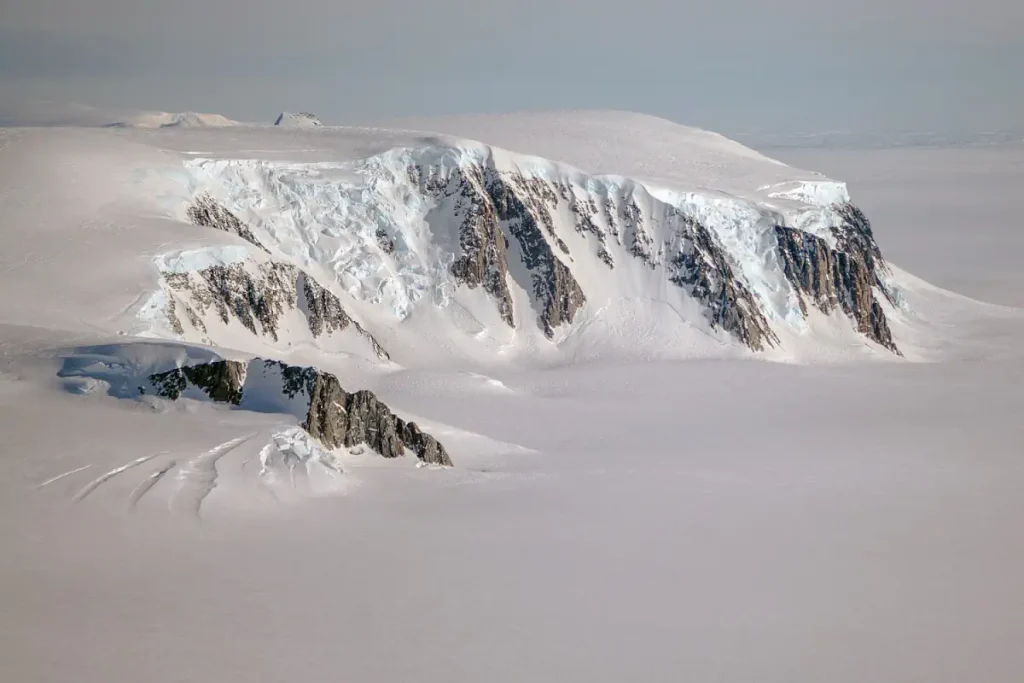
22. There are no Trees in Antarctica
Antarctica is the only continent on Earth with no trees. Today, it stands as the largest desert on the planet, dominated by ice and extreme conditions. However, about 53 million years ago, during the early Eocene period, Antarctica was remarkably different. Winter temperatures exceeded 10°C, and summers may have reached 25°C, allowing palm trees to thrive on the continent.
In the present day, vegetation is limited to Subantarctic flora, such as coastal tussock grass, which can grow up to 2 meters (7 feet). On continental Antarctica, only two flowering plants exist: the Antarctic hair grass (Deschampsia Antarctica) and the Antarctic pearlwort (Colobanthus quitensis). These hardy plants are found exclusively on the western edge of the Antarctic Peninsula and nearby island groups like the South Orkney Islands and South Shetland Islands. This striking transformation highlights the continent’s fascinating ecological history and its present-day challenges.
23. Over 1,000 Fungi Species can be Found On and Around Antarctica
Antarctica hosts over 1,000 fungal species, thriving in extreme conditions like freezing temperatures, high UV radiation, and nutrient scarcity. These fungi are found in soils, rocks, permafrost, ice, and marine ecosystems. They exhibit remarkable adaptations, such as cold-tolerant enzymes, melanin for UV protection, and slow metabolism to survive harsh environments.
Some form symbiotic relationships with Antarctic plants and lichens. Studied for their roles in nutrient cycling, biotechnology, and astrobiology (Antarctic fungi are studied as analogs for potential life on icy planets and moons, such as Mars and Europa), these fungi provide insights into life’s resilience. Notable examples include Cryomyces species in rocks and cold-adapted yeasts. Antarctic fungi serve as models for life in extreme environments, including other planets.
24. Antarctica (Naturally) Contains Every Timezone on the Planet
Antarctica contains every time zone because it is centered around the South Pole, where all lines of longitude converge, meaning every longitudinally defined time zone meets there. However, timekeeping in Antarctica is largely practical rather than geographic, as the continent has no permanent residents and research stations typically follow the time zones of their operating countries or logistical hubs. Additionally, the extreme seasonal daylight (six months of continuous daylight in summer and darkness in winter) renders conventional time zones less meaningful for daily life.
25. The Saltiest Water Body on Earth is in Antarctica: Don Juan Pond of McMurdo Dry Valleys
Don Juan Pond, located in Antarctica’s McMurdo Dry Valleys, is the saltiest natural body of water in the world, with salinity levels reaching up to 45.8%, making it 1.3 times saltier than the Dead Sea. This extreme salinity significantly lowers its freezing point, allowing the pond to remain liquid even in temperatures as low as -50°C (-58°F).
Situated between the Asgard and Dais Ranges in Wright Valley, this shallow, flat-bottomed pond is dominated by calcium chloride and surrounded by salt deposits from evaporated water. Its area and depth have varied over time, shrinking considerably in recent decades, with much of its water now limited to depressions near large rocks.
Discovered in 1961 and named after helicopter pilots Don Roe and John Hickey, Don Juan Pond is home to a sparse microbial ecosystem thriving in its harsh, hypersaline conditions. It includes a few species of bacteria and yeast.

- The best meteorites are found in Antarctica. Meteorites fall everywhere on Earth with equal probability, but in Antarctica, they can be found easily (black rock on the white ice) and largely undisturbed by natural processes. The Antarctic Meteorite Program is a cooperative agreement between three agencies: the National Science Foundation, NASA, and the Smithsonian Institution – providing for the collection, curation, distribution, and long-term storage of meteorites recovered during annual U.S. expeditions to Antarctica.
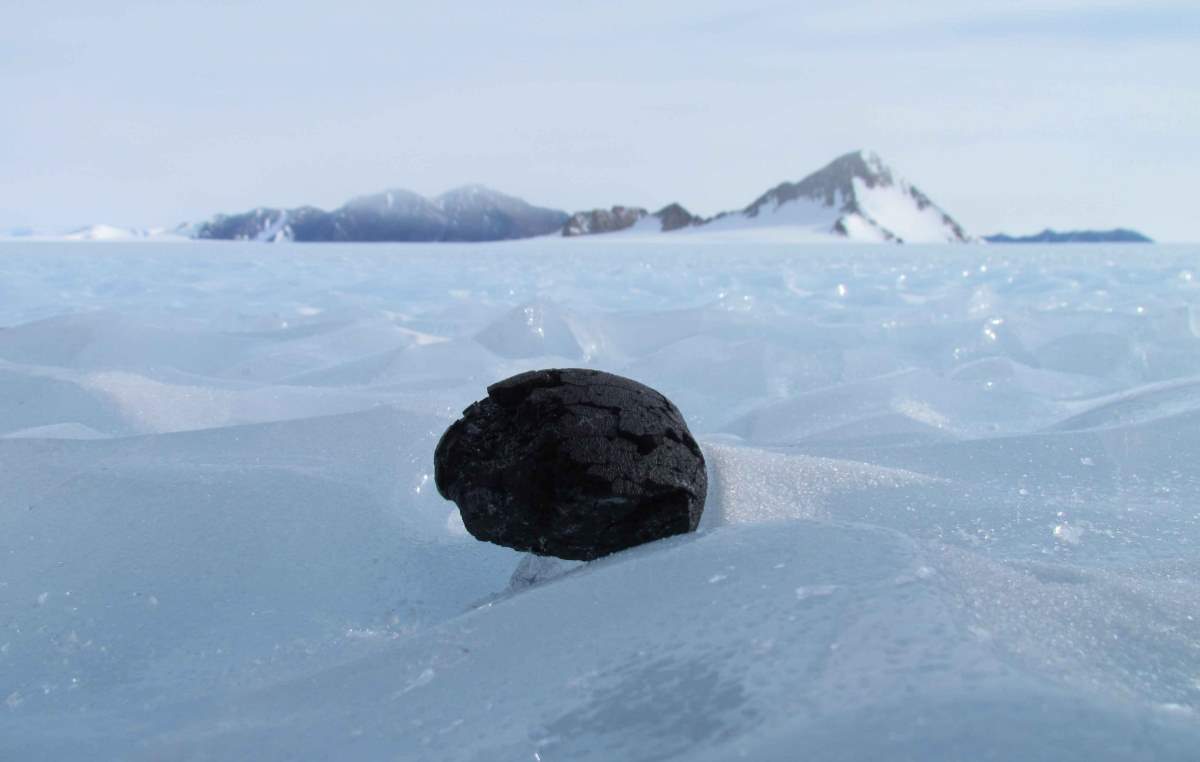
- There is a blood-red waterfall in Antarctica, named “Blood Falls”. It is an outflow of an iron oxide-tainted plume of saltwater, flowing from the tongue of Taylor Glacier onto the ice-covered surface of West Lake Bonney in the Taylor Valley of the McMurdo Dry Valleys in Victoria Land, East Antarctica.
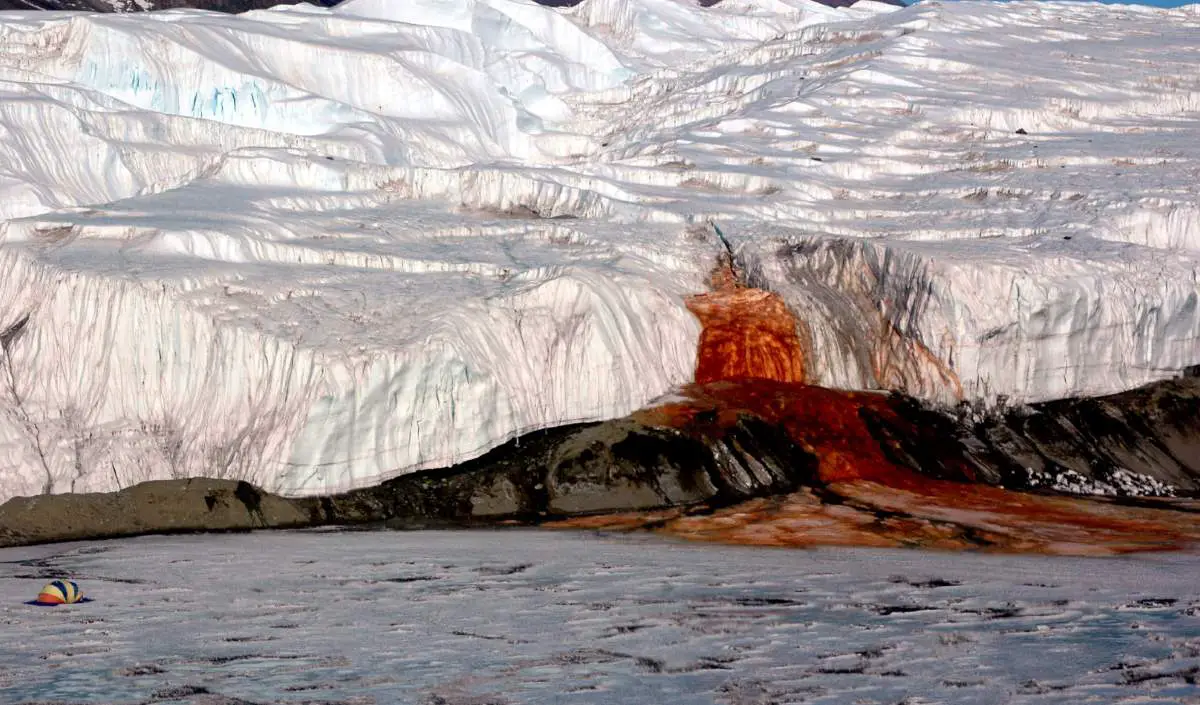
- The Antarctic Treaty dedicates the continent to peaceful research activities. It was signed on December 1, 1959, after more than a year of secret negotiations by 12 countries. As of 2017, there are 53 states party to the treaty. Today, nearly 30 countries operate more than 80 research stations around the continent.
- There are between around 1000 (during winter) – 4,000 (during summer) researchers in Antarctica. Apart from that, there are no indigenous populations. It is completely inhabited.
- Born in Fortín Sargento Cabral at the Esperanza Base, near the tip of the Antarctic Peninsula on 7 January 1978, Emilio Marcos Palma, an Argentine man, is known for being the first documented person born on the continent of Antarctica.
- Antarctica is also a tourist site. According to the International Association of Antarctica Tour Operators (IAATO), around 25,000-30,000 tourists visit the Antarctic Peninsula every year.
- Antarctica has its own domain extension: .aq
- There was a nuclear reactor in Antarctica from 1964 to 1972. It was a medium-sized, portable nuclear reactor installed at McMurdo Station, and was the first and only to operate on the Antarctic continent. It operated for 10 years and greatly reduced the need for fossil fuels in the Antarctic. But, during its operational lifetime, there was a total of 438 malfunctions. Because of being an unreliable source of power generation, available only 72% of the time, in May of 1972, it was determined and replaced with more reliable modern diesel-electric generators.
- There is a Fire Department in Antarctica, which is based at McMurdo Station. It is the only full-time professional fire department in Antarctica, and the largest and best equipped.
- The world’s southernmost bar is in Antarctica, at Vernadsky Research Base.
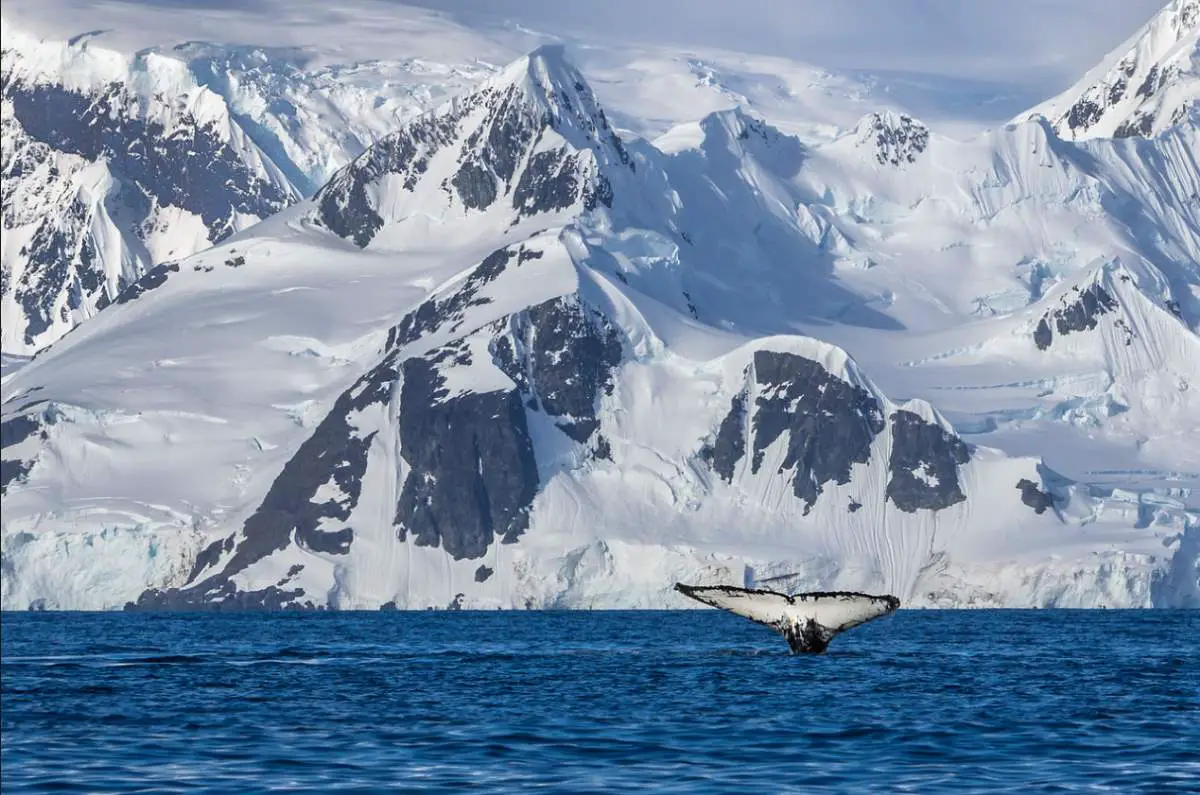
36. Appendix Removal May Be Required for Winter Stays in Antarctica
For those planning to stay at Antarctic research stations during the winter months, particularly in remote and isolated locations, having your appendix removed beforehand may be required. This precaution is not just an urban legend, but a real safety measure taken by some research stations.
The reason is simple: during the harsh Antarctic winter, evacuation or access to advanced medical care is often impossible due to extreme weather and logistical challenges. Developing appendicitis in such conditions could become life-threatening if surgery is not immediately available.
Research bases like the Amundsen-Scott South Pole Station or Concordia Station, where personnel are completely cut off from the outside world for months, often require individuals to have their appendix removed prior to deployment if it hasn’t already been done. This policy helps minimize the risk of medical emergencies that can’t be handled on-site.
However, for short-term visitors or tourists to Antarctica, this is not a requirement, making this a fact specific to those overwintering in these remote, scientific outposts.
What would Antarctica look like if all its ice melted
Have you ever wondered what would Antarctica look like if all its ice melted? This may seem extraordinary and unlikely, but, this has actually happened in the past. In fact, there have been no major ice sheets over the South Pole for most of the Earth’s history.
In the video below, NASA Goddard strips away Antarctic ice to reveal a new, and much more detailed map of the bedrock below. This map, called Bedmap2, was compiled by the British Antarctic Survey and incorporates millions of new measurements, including substantial data sets from NASA’s ICESat satellite and an airborne mission called Operation IceBridge.
The video above is in the public domain and can be downloaded from the NASA website.
Sources
- Antarctica Facts on the Live Science website
- NASA’s IceBridge Mission Contributes to New Map of Antarctica on NASA.gov
- What would the world look like if all of the ice in Antarctica melted? on http://scienceline.ucsb.edu
- History of Antarctica on Wikipedia
- Amundsen’s South Pole expedition on Wikipedia
- Lake Vostok on Wikipedia
- Wildlife of Antarctica on Wikipedia
- History of McMurdo Station on Stanford.edu
- NASA Study: Mass Gains of Antarctic Ice Sheet Greater than Losses
- “Why is Antarctica the Windiest Place on Earth?” on the American Museum of Natural History website
- First Russian Antarctic Expedition on Wikipedia
- “Blood Falls, Ice Falls, and Sand Dunes” on the Adventures on Antarctica blog
- “What lies beneath: Giant trench under Antarctic Ice, deeper than Grand Canyon” on the Science Daily website
- How Many Elephants are Left in the World in 2025? - August 17, 2025
- Moon Landings: All-Time List [1966-2025] - February 2, 2025
- What Is Max-Q and Why Is It Important During Rocket Launches? - January 16, 2025

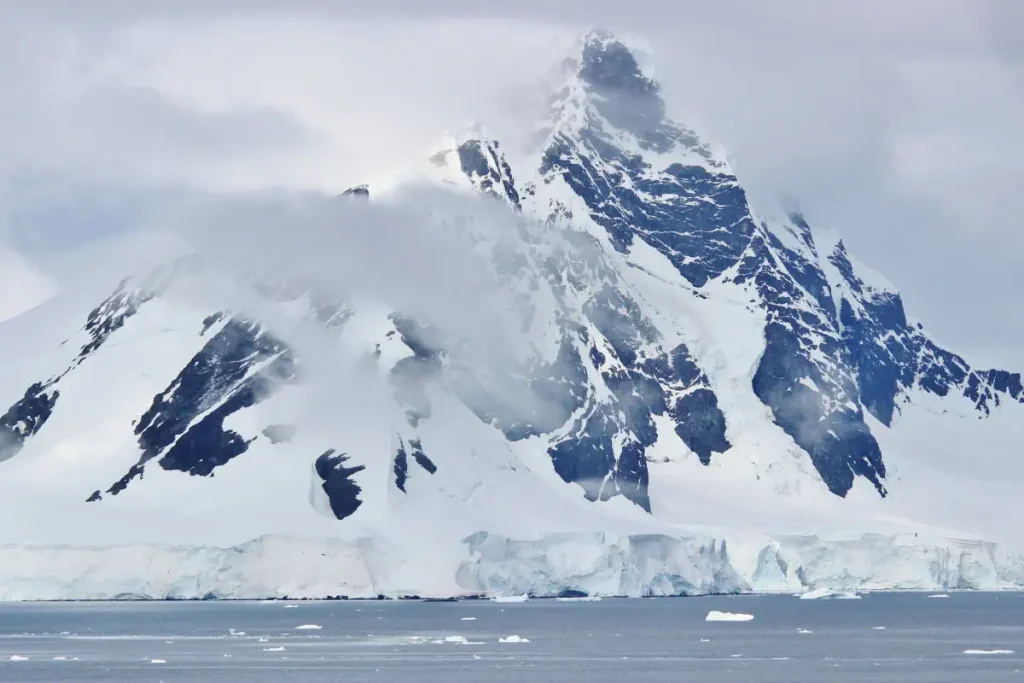

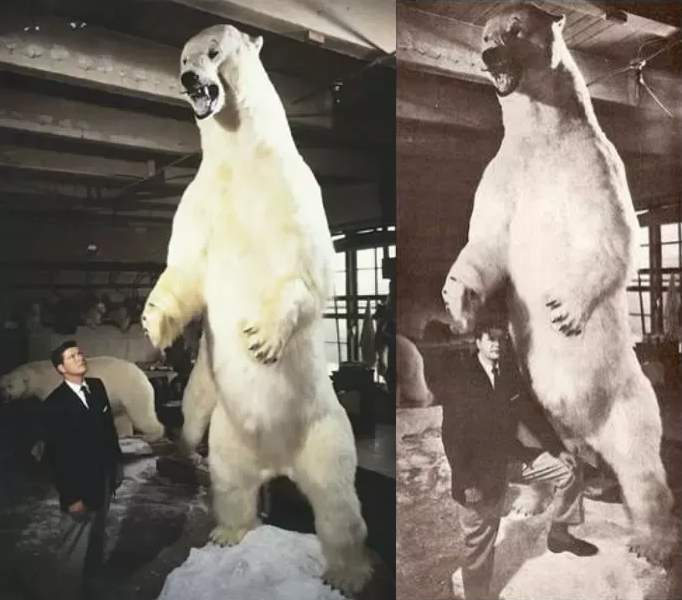
One reply on “Antarctica Facts: 36 Interesting Things about the Frozen Continent”
[…] Emperor Penguin is native to Antarctica where the temperatures reach -60 degrees Celcius. They weigh 22 to 45 kilograms and can grow up to […]